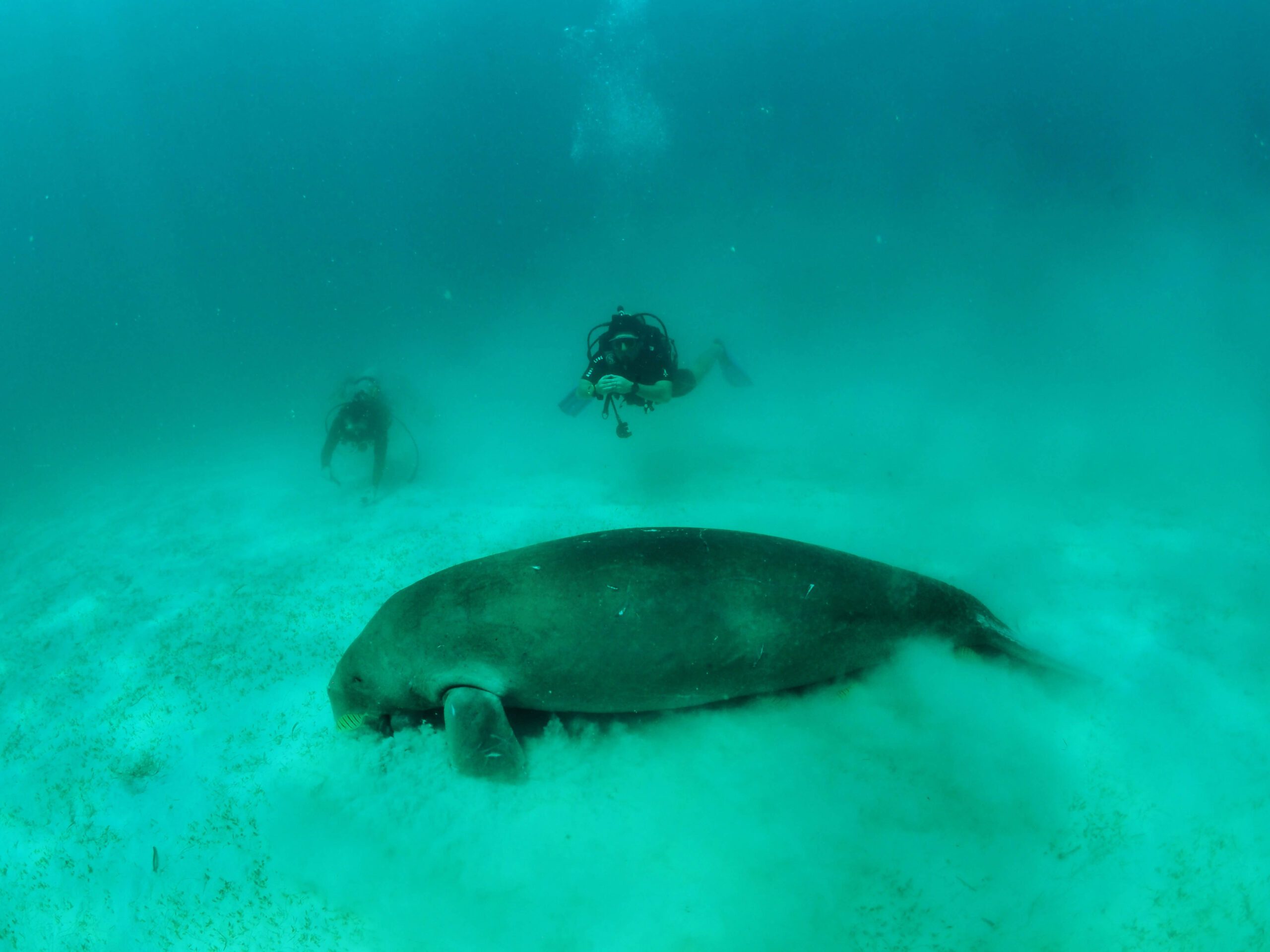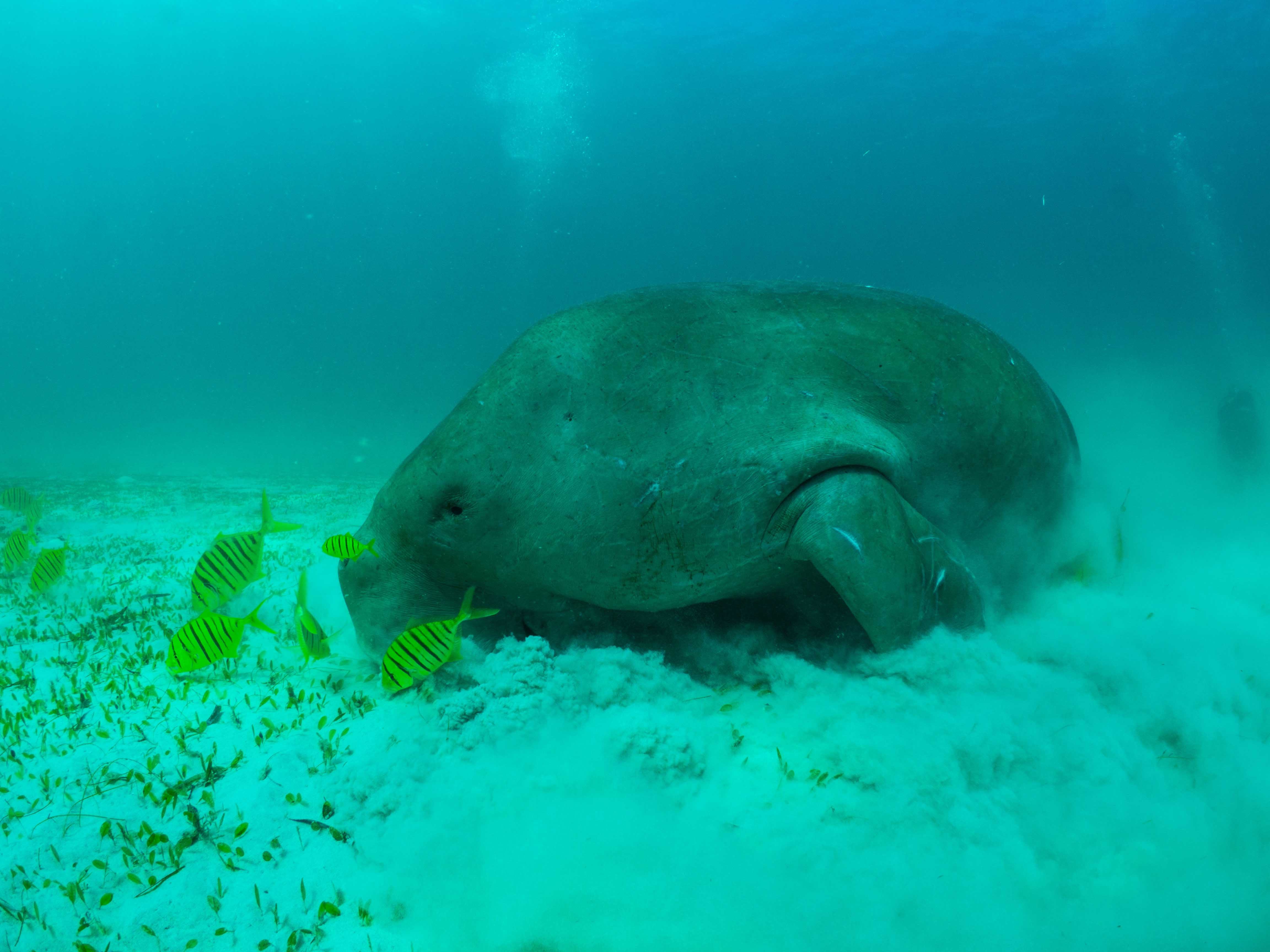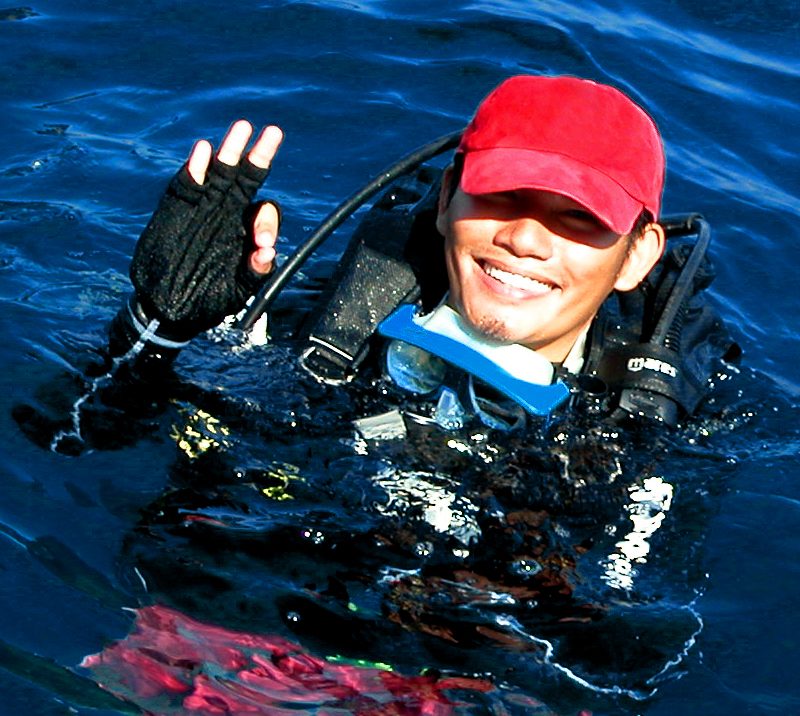SUMMARY
This is AI generated summarization, which may have errors. For context, always refer to the full article.

PALAWAN, Philippines – My too-tight wetsuit’s turning into a sauna but I don’t mind. We’re aboard a double-decked dive boat in Calauit Island in oh-too-sunny Northern Palawan and today might finally be the day. Over the years, I’ve met some of the sea’s most amazing residents – from macho tiger sharks to playful dolphins – but one creature has been more elusive than others.
With underwater photographer Danny Ocampo and expert guides from the Tagbanua tribe, we’re finally hoping for some downtime with a dugong.
Dugongs are legendary sea creatures, having inspired lonely seamen’s “sightings” of mermaids (being out at sea for months or years, who can blame them). Their last relatives were Stellar’s sea cows (Hydrodamalis gigas), which were wiped out by hunters just 36 years after being discovered by scientists.
“It’s still early so we have a fairly good chance of sightings. Look for splashes or shadows near the surface,” explains our guide, Dodong Valera. We gaze at our swim-spotter swimming a hundred feet away, homemade plastic fins slapping the sea’s surface. “There are around 30 dugongs in this area. If we’re lucky, we’ll see the largest and friendliest of them all, Aban.”
My brain’s baking from the heat, so I nod absentmindedly and slop seawater inside my wetsuit, trying to cool down. Twenty minutes and a pound of sweat later, the spotter finally gives the signal: target sighted!
Excitedly, we become one with fin and rig and slide gleefully into a vast expanse of seagrass.
Sirenians
Dugongs (Dugong dugon) are distant cousins of elephants, growing up to 3 meters and weighing about 400 kilograms. Also called sea cows, they inhabit shallow waters of the Coral Triangle, wherever seagrass is most abundant. They are the fourth member of the order Sirenia, alongside the three manatee species. A fifth, the gigantic 8-meter long Steller’s sea cow, was completely wiped out by 1768. Dugong comes from the Malay word duyung, which means “lady of the sea.”
Sizeable herds of dugongs once plied the Philippine archipelago until hunting and habitat destruction reduced numbers. Populations still hold out in Isabela, Mindanao, Guimaras and Palawan, but encounters are extremely rare.
Dugongs are thought to live as long as humans (about 70 years), but give birth to just one calf every 3 to 5 years. They are globally classified as vulnerable and are considered critically endangered in the Philippines because of their sparse numbers. Prior to our Coron trip, I’ve spent 20 years looking for one – they’re just that rare.
Says dugong conservationist Dr Teri Aquino: “We can learn a lot about sustainable use and responsible stewardship from the dugong. It consumes a lot of seagrass yet leaves the seagrass bed even healthier than before. When feeding, they help release micronutrients from the seabed, making nutrients more accessible for small fish – and this is why we always see fish swimming with dugongs.”
“This gentle marine mammal living the simplest of lives is one of the best caretakers of our seagrass habitats and the animals that live in them,” Aquino adds.
A famous dugong

After 20 years of waiting, I’m finally face-to-face with a dugong. It’s not like a whale that steals your breath because of sheer size, nor a shark that inspires more than just a hint of fear, no matter how small it is. Dugongs are huge but friendly, just like a mermaid Hodor.
Dodong signals us to keep at least 5 meters away from the obliviously grazing bull, crunching on clumps of Halophila ovalis which, unlike most types of seagrass, has small round leaves instead of flowing grass blades. Dugongs wolf down up to 40 kilograms a day, keeping hectares of seagrass pruned and productive. Danny starts shooting.

Magical minutes pass, then we fin up to leave the meditative mammal be. Incredibly, Aban says goodbye, circling around us on the surface. I wave adios as he dives and disappears into the teal waters. As the animal ambles closer, I notice fighting scars on his hide. This is Aban, confirms Dodong with a nod. Owing to his good nature and natural curiosity, generations of divers have swam and photographed the scarred, 3-meter long dugong, who seems perennially surrounded by colorful golden trevally. I notice his skin is brown and not grey (dugongs only look grey in pictures because they’re usually photographed below 3 meters), his beady eyes and his serene, Siddhartha Gautama-level expression.
Though dugongs are protected by law nationwide, they still get accidentally entangled in fishing gear and drown. The once-vast seagrass meadows they depend on for food are being destroyed by coastal reclamation and pollution. By protecting not just dugongs – but the seagrass meadows that support them – tomorrow’s Pinoys might too get a chance to come face to face with the real mermaids of the sea. (READ: Critically-endangered dugong found dead in Palawan)
We climb back on our boat, exchanging high-fives and fresh tales to share with other environment-lovers. The boat revs its engines and we’re off with big smiles etched on our faces. – Rappler.com
To book your dugong adventure, contact the Dugong Dive Center’s Dirk Fahrenbach at info@dugongdivecenter.com.
Gregg Yan is founder of the Best Alternatives Campaign. He wrote this feature in celebration of World Oceans Day, June 8.
Add a comment
How does this make you feel?





There are no comments yet. Add your comment to start the conversation.